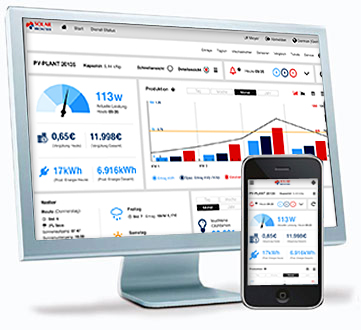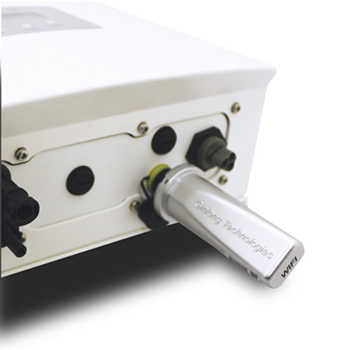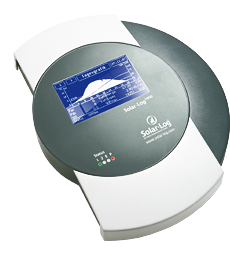 Loading... Please wait...
Loading... Please wait...- Home
- Solaris Blog
- Commercial Data Logging Solutions
Products
- Solar Panels
- Solar Panel Kits
- Solar Generators
- Inverters
- Inverter Monitoring
- Inverter Accessories
- Balance of Systems
- Racking and Mounting
- Rails
- Flashings
- Splice Kits
- Stopper Sleeves
- Conduit Mounts
- Attachments
- Brace Assembly
- Base Mount
- Brackets
- Bolts
- Clamps
- Caps
- L-Feet
- Washers
- Skirt
- Lugs
- Tilt Legs
- Hooks
- Stand-Offs
- Ballast Bay
- Top of Pole Mount
- Side of Pole Mount
- Flush Mount Kits
- Ground Mount Kits
- Roof Mount Kits
- Hardware Packages
- Wire Management
- Batteries
- Battery Accessories
- Charge Controllers
- Tools and Supplies
- View All Products
Commercial Data Logging Solutions
Posted by Brandi Casey on 5th May 2017
Commercial power plants are beneficial for both individual
companies and entire communities. Large scale commercial solar installations
can be used to power large commercial buildings or provide renewable energy resources
for many households under community solar programs. The Community Solar program
in California, for example, has the capacity to power a great number of homes,
at a lower cost than California utility companies. In order for any commercial
utility system to have a fast ROI period, installers must ensure that they plan
each step of the installation from the panels to the gauge of wiring. Careful
system monitoring is essential in ensuring that the system is working at its
maximum efficiency, as well as quickly troubleshoot any issues that could be
affecting the performance of the system as a whole.
Commercial data-logging can sometimes be used by simply
selecting inverter manufacturers that have integrated, or optional monitoring
solutions. SolarEdge is well known for their system monitoring, which comes
included when using optimizers in combination with their highly efficient
inverters. With the added benefit of optimizers, the system works at its
maximum capacity and produces data for individual panels and the entire system.
Although this requires a larger initial investment, the quick troubleshooting
and added efficiency of the system puts the company ahead of their competitors
in terms of investor return on investment. The quick troubleshooting capacity
their technology has saves from costly repairs that can take a great number of
man hours when the necessary data is not provided and makes them one of the
most solid inverter investments for both commercial and residential systems.
Ginlong Technologies, also offers easy to install monitoring
equipment including their wi-fi and ethernet plugins which feeds data from the
inverter directly to Ginlong’s web-based inverter monitoring system. Although
the system may not pinpoint possible losses in efficiency as well as the
individual data from SolarEdge, the technology comes at a less costly initial
price tag and does provide in depth data about the performance of the system.
Technical help from the manufacturer can help with possible losses in
efficiency and a more accurate overview on where the inefficiencies are taking
place.
Microinverter technology from companies such as Enphase and APsystems also provide individual panel efficiency data by design. Unlike
string inverters, microinverters are installed directly on the backs of each
panel and ensure that if one panel is not working at its maximum efficiency
rating, it does not drag down the efficiency of the surrounding panels. This
benefit makes them a great, albeit, costly solution for commercial systems. However,
with data logging technologies offering readings for up to six hundred
micoinverters, as is the case with the Enphase Envoy, installers will likely
only need to invest in one data logger to get drilled down data from each
panel. Like the SolarEdge optimizers, the added benefits of using individual
components can assist in offsetting initial investment costs and ensure that
the entire system is working together in such a way as to produce the maximum
benefit to the user. Microinverters are further designed to last longer than
string inverter systems and can save the installer a great deal of time and
money in costly replacements and upgrades.
Companies such as Solar-Log offer their own technology to monitor and produce accurate readings for an entire system. Unlike their competitors, their commercial data logging products are highly compatible with a number of inverters including those of a commercial size. Users can access data from virtually anywhere including a tablet. The wall mounted technology is highly flexible in how and where the data can be accessed and can be fed directly to your installer or solar team, informing them of costly inefficiencies in your system, giving them ample time to fix the problem before more costly repairs are needed.
Just as is the case with residential systems, system monitoring is essential in ensuring maximum energy output and saving time, resources and money in maintenance and repairs. Many monitoring solutions are the same if not similar to those offered for residential systems and will increase the expected ROI time and are well worth their initial investment. With solar technology dramatically increasing from year to year, keeping proper logs of your system and looking for areas to improve efficiency is essential to ensure that your system remains up to date and lasts for the duration and beyond their expected warranty periods.








